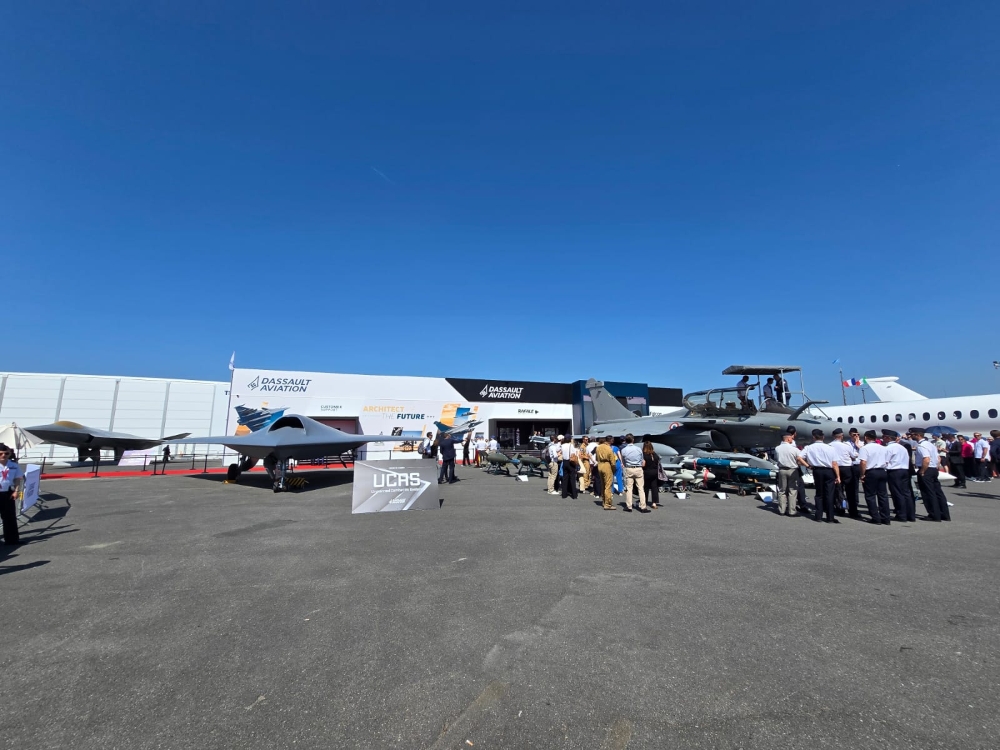
The Paris Air Show 2025 has become the stage for the increasingly visible fractures within the SCAF/FCAS project, as Dassault Aviation CEO Eric Trappier's latest declarations have laid bare the deep-seated tensions threatening the Future Combat Air System (FCAS) programme. What was once heralded as the cornerstone of European defence cooperation now appears increasingly fragile, with the relationship between French aerospace champion Dassault and pan-European giant Airbus deteriorating into public acrimony.
"Something is not working," Trappier has been spelling out in the last few months, adding that the programme "needs to be reviewed" by the participating governments. His comments at Le Bourget this week have only intensified concerns, as he reasserted that "only his company has the skills to develop the New Generation Fighter (NGF)" at the core of the programme.
An unnatural union of industrial cultures
The FCAS/SCAF programme, launched with great fanfare in 2017 by then-German Chancellor Angela Merkel and French President Emmanuel Macron, has struggled from its inception to reconcile fundamentally different industrial philosophies. This Franco-German-Spanish initiative was meant to replace the RAFALE and TYPHOON fleets by 2040 with a sixth-generation fighter system.
At the heart of the dispute lies a clash of industrial cultures and governance models. Dassault, with its proud heritage of sovereign fighter design and production, views itself as the natural leader of the fighter component, while Airbus, representing German and Spanish interests, pushes for what it calls "equal standing". This tension reflects deeper historical differences in how the two nations approach defence procurement and industrial policy.
The consequences of this industrial discord are tangible and severe. Originally scheduled to have a demonstrator flying by 2025, the timeline has steadily slipped – first to 2027, then to 2028, and now potentially much further. In a sobering assessment, Trappier has stated that the original 2040 in-service date is "already lost" and that the programme is now "rather for the 2050s". Governments’ failure to pledge the necessary investment in due time did not help, though. These setbacks place the SCAF/FCAS at a significant disadvantage compared to competing programmes, potentially entering service around 20 years behind US and Chinese sixth-generation fighters.
Governments at a crossroads
The deteriorating situation has forced a reckoning among the participating governments. The programme's future now hinges on political intervention at the highest levels, with a December summit involving France, Germany, and Spain expected to determine the next steps for the troubled project. This reflects the reality that without decisive political intervention, the technical and industrial disputes cannot be resolved.
The governance structure itself has become a point of contention, with Dassault protesting against the "one country, one vote" system that allows Germany and Spain to potentially overrule France despite its position as lead nation. Trappier has demanded a higher share than the one-third it currently possesses and greater operational freedom, so to empower Dassault Aviation to truly lead the working group on the aircraft (Pillar 1) instead of the current theoretical leadership but practical equality.
An uncertain future
As the Paris Air Show draws to a close, the FCAS programme stands at a critical juncture. Industry insiders and defence analysts increasingly question whether the project can survive in its current form. The rival Global Combat Air Programme (GCAP) – a collaboration between the UK, Italy, and Japan – is gaining momentum and has committed to delivering a new fighter by 2035, adding competitive pressure.
The coming months will determine whether the ambitious defence project can overcome its internal divisions or whether it will join the long list of failed multinational defence collaborations. What is clear is that without a fundamental reset in both industrial relations and governmental oversight, the future of French, German, and Spanish air power sovereignty hangs in the balance.
At this stage, there are three knots to untangle.
First, how strong is the political will of France and Germany to fight the next wars with a jointly-made aircraft?
Second, can an alliance in which political power dictates collaboration between industrial partners whose history and tradition are strong and very different really work?
Third, what is it said in the joint documents between the French, German and Spanish air forces (HLCORD and CORD) that determine the requirement and thus also determines who can respond timely and effectively and with what industrial formula? (If time and effectiveness have ever been considered…)








.png)
